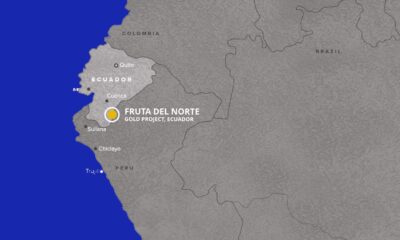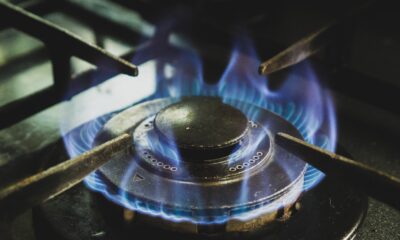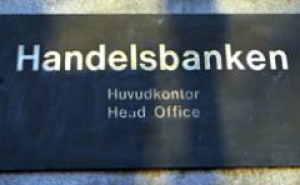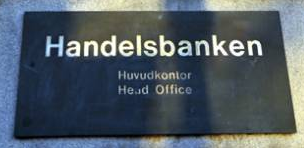Analys
SHB Råvarubrevet 16 mars 2012
 Robust makrostatistik, minskade skuldkrisrisker och grusade QE3-förväntningar har varit huvudnyheterna senaste veckan. Marknaden ser också ut att ha hanterat den grekiska CDS-defaulten väl, även om vissa frågor ännu ej besvarats. Det finns fortfarande gott om saker att oroa sig för i EMU-området, men det dröjer in i april eller maj innan den politiska agendan blir riktigt tung. Bland annat ska Irlands parlament folkomrösta om den nya finanspakten. Om de säger nej får de inte längre bli räddade av räddningsfaciliteten ESM.
Robust makrostatistik, minskade skuldkrisrisker och grusade QE3-förväntningar har varit huvudnyheterna senaste veckan. Marknaden ser också ut att ha hanterat den grekiska CDS-defaulten väl, även om vissa frågor ännu ej besvarats. Det finns fortfarande gott om saker att oroa sig för i EMU-området, men det dröjer in i april eller maj innan den politiska agendan blir riktigt tung. Bland annat ska Irlands parlament folkomrösta om den nya finanspakten. Om de säger nej får de inte längre bli räddade av räddningsfaciliteten ESM.
Det mest intressanta på råvarumarknaden var gårdagens rykten kring Storbritannien och USA som skall ha kommit överrens om att pressa oljepriset genom att släppa på strategiska reserver, något som fick oljepriset att falla mer än 3 dollar per fat på tre minuter. Oljemarknaden återhämtade sig dock efter att detta dementerats. Riskaptiten har annars hållit i sig, trots viss börsoro som vi bedömer var relaterat till den ”frivilligt tvingande” nedskrivningen av värdet på Grekiska obligationer. Vi tänker oss att vi inte ännu sett de realekonomiska effekterna av den senaste tidens ”riskrally”. När vi gör detta kan rallyt ges ytterligare stöd. Konsumtionen tar fart kortsiktigt på grund av positiva förmögenhetseffekter samtidigt som investeringsefterfrågan ges skjuts på grund av lägre finansieringskostnader och starkare framtidstro.
Det grekiska skuldkrisdramat är inte över, om nu någon trodde det. De nya obligationerna indikeras på en ränta som är konsistent med ytterligare skuldproblem. Hur mycket Grekiska CDS-kontrakten till slut blev värda är ej heller fastställt utan kommer att slås fast den 19 mars.
Inga större rörelser på elmarknaden där det milda och blöta vädret i kombination med ett fortsatt svagt bränslekomplex (energikol och gas) håller det tredje kvartalet i stort sett oförändrat över veckan. Ädelmetallerna har fortsatt falla under veckan som gått, lett av silver (- 4.65 %) och guld (- 3,20 %). Platina och palladium är oförändrade, och vi behåller vår vy att framför allt guldet är för dyrt på dessa nivåerna. För er som inte noterade utskicket igår så har vi även tittat lite på relationen mellan olja och guld som stigit med över 18 procent de senaste två månaderna. Vi tror att detta kommer att fortsätta, guldmarknaden är lång, och oljemarknaden har inte tagit höjd för en upptrappning kring Hormuz-sundet. Därför tycker vi att en trade där man går lång olja (köp certifikatet OLJA H) mot ädelmetaller (köp certifikatet ADELMET S H) är perfekt i denna situation.
Vi fortsätter vår position för ”risk on” med positiv syn på energi och basmetaller. Neutral på jordbruk och negativ på ädelmetaller.
Nästa vecka reser vi runt i Kina för att träffa myndigheter och företag i landet. Vi kommer därefter att släppa en uppdaterad sektorrapport på metaller och självklart skriva ner våra intryck från resan i kommande råvarubrev.
[box]SHB Råvarubrevet är producerat av Handelsbanken och publiceras i samarbete och med tillstånd på Råvarumarknaden.se[/box]
Ansvarsbegränsning
Detta material är producerat av Svenska Handelsbanken AB (publ) i fortsättningen kallad Handelsbanken. De som arbetar med innehållet är inte analytiker och materialet är inte oberoende investeringsanalys. Innehållet är uteslutande avsett för kunder i Sverige. Syftet är att ge en allmän information till Handelsbankens kunder och utgör inte ett personligt investeringsråd eller en personlig rekommendation. Informationen ska inte ensamt utgöra underlag för investeringsbeslut. Kunder bör inhämta råd från sina rådgivare och basera sina investeringsbeslut utifrån egen erfarenhet.
Informationen i materialet kan ändras och också avvika från de åsikter som uttrycks i oberoende investeringsanalyser från Handelsbanken. Informationen grundar sig på allmänt tillgänglig information och är hämtad från källor som bedöms som tillförlitliga, men riktigheten kan inte garanteras och informationen kan vara ofullständig eller nedkortad. Ingen del av förslaget får reproduceras eller distribueras till någon annan person utan att Handelsbanken dessförinnan lämnat sitt skriftliga medgivande. Handelsbanken ansvarar inte för att materialet används på ett sätt som strider mot förbudet mot vidarebefordran eller offentliggörs i strid med bankens regler.
Analys
Crude inventories builds, diesel remain low

U.S. commercial crude inventories posted a 3-million-barrel build last week, according to the DOE, bringing total stocks to 426.7 million barrels – now 6% below the five-year seasonal average. The official figure came in above Tuesday’s API estimate of a 1.5-million-barrel increase.

Gasoline inventories fell by 0.8 million barrels, bringing levels roughly in line with the five-year norm. The composition was mixed, with finished gasoline stocks rising, while blending components declined.
Diesel inventories rose by 0.7 million barrels, broadly in line with the API’s earlier reading of a 0.3-million-barrel increase. Despite the weekly build, distillate stocks remain 15% below the five-year average, highlighting continued tightness in diesel supply.
Total commercial petroleum inventories (crude and products combined, excluding SPR) rose by 7.5 million barrels on the week, bringing total stocks to 1,267 million barrels. While inventories are improving, they remain below historical norms – especially in distillates, where the market remains structurally tight.
Analys
OPEC+ will have to make cuts before year end to stay credible

Falling 8 out of the last 10 days with some rebound this morning. Brent crude fell 0.7% yesterday to USD 65.63/b and traded in an intraday range of USD 65.01 – 66.33/b. Brent has now declined eight out of the last ten days. It is now trading on par with USD 65/b where it on average traded from early April (after ’Liberation day’) to early June (before Israel-Iran hostilities). This morning it is rebounding a little to USD 66/b.

Russia lifting production a bit slower, but still faster than it should. News that Russia will not hike production by more than 85 kb/d per month from July to November in order to pay back its ’production debt’ due to previous production breaches is helping to stem the decline in Brent crude a little. While this kind of restraint from Russia (and also Iraq) has been widely expected, it carries more weight when Russia states it explicitly. It still amounts to a total Russian increase of 425 kb/d which would bring Russian production from 9.1 mb/d in June to 9.5 mb/d in November. To pay back its production debt it shouldn’t increase its production at all before January next year. So some kind of in-between path which probably won’t please Saudi Arabia fully. It could stir some discontent in Saudi Arabia leading it to stay the course on elevated production through the autumn with acceptance for lower prices with ’Russia getting what it is asking for’ for not properly paying down its production debt.
OPEC(+) will have to make cuts before year end to stay credible if IEA’s massive surplus unfolds. In its latest oil market report the IEA estimated a need for oil from OPEC of 27 mb/d in Q3-25, falling to 25.7 mb/d in Q4-25 and averaging 25.7 mb/d in 2026. OPEC produced 28.3 mb/d in July. With its ongoing quota unwind it will likely hit 29 mb/d later this autumn. Staying on that level would imply a running surplus of 3 mb/d or more. A massive surplus which would crush the oil price totally. Saudi Arabia has repeatedly stated that OPEC+ it may cut production again. That this is not a one way street of higher production. If IEA’s projected surplus starts to unfold, then OPEC+ in general and Saudi Arabia specifically must make cuts in order to stay credible versus what it has now repeatedly stated. Credibility is the core currency of Saudi Arabia and OPEC(+). Without credibility it can no longer properly control the oil market as it whishes.
Reactive or proactive cuts? An important question is whether OPEC(+) will be reactive or proactive with respect to likely coming production cuts. If reactive, then the oil price will crash first and then the cuts will be announced.
H2 has a historical tendency for oil price weakness. Worth remembering is that the oil price has a historical tendency of weakening in the second half of the year with OPEC(+) announcing fresh cuts towards the end of the year in order to prevent too much surplus in the first quarter.
Analys
What OPEC+ is doing, what it is saying and what we are hearing

Down 4.4% last week with more from OPEC+, a possible truce in Ukraine and weak US data. Brent crude fell 4.4% last week with a close of the week of USD 66.59/b and a range of USD 65.53-69.98/b. Three bearish drivers were at work. One was the decision by OPEC+ V8 to lift its quotas by 547 kb/d in September and thus a full unwind of the 2.2 mb/d of voluntary cuts. The second was the announcement that Trump and Putin will meet on Friday 15 August to discuss the potential for cease fire in Ukraine (without Ukraine). I.e. no immediate new sanctions towards Russia and no secondary sanctions on buyers of Russian oil to any degree that matters for the oil price. The third was the latest disappointing US macro data which indicates that Trump’s tariffs are starting to bite. Brent is down another 1% this morning trading close to USD 66/b. Hopes for a truce on the horizon in Ukraine as Putin meets with Trump in Alaska in Friday 15, is inching oil lower this morning.

Trump – Putin meets in Alaska. The potential start of a process. No disruption of Russian oil in sight. Trump has invited Putin to Alaska on 15 August to discuss Ukraine. The first such invitation since 2007. Ukraine not being present is bad news for Ukraine. Trump has already suggested ”swapping of territory”. This is not a deal which will be closed on Friday. But rather a start of a process. But Trump is very, very unlikely to slap sanctions on Russian oil while this process is ongoing. I.e. no disruption of Russian oil in sight.
What OPEC+ is doing, what it is saying and what we are hearing. OPEC+ V8 is done unwinding its 2.2 mb/d in September. It doesn’t mean production will increase equally much. Since it started the unwind and up to July (to when we have production data), the increase in quotas has gone up by 1.4 mb/d, while actual production has gone up by less than 0.7 mb/d. Some in the V8 group are unable to increase while others, like Russia and Iraq are paying down previous excess production debt. Russia and Iraq shouldn’t increase production before Jan and Mar next year respectively.
We know that OPEC+ has spare capacity which it will deploy back into the market at some point in time. And with the accelerated time-line for the redeployment of the 2.2 mb/d voluntary cuts it looks like it is happening fast. Faster than we had expected and faster than OPEC+ V8 previously announced.
As bystanders and watchers of the oil market we naturally combine our knowledge of their surplus spare capacity with their accelerated quota unwind and the combination of that is naturally bearish. Amid this we are not really able to hear or believe OPEC+ when they say that they are ready to cut again if needed. Instead we are kind of drowning our selves out in a combo of ”surplus spare capacity” and ”rapid unwind” to conclude that we are now on a highway to a bear market where OPEC+ closes its eyes to price and blindly takes back market share whatever it costs. But that is not what the group is saying. Maybe we should listen a little.
That doesn’t mean we are bullish for oil in 2026. But we may not be on a ”highway to bear market” either where OPEC+ is blind to the price.
Saudi OSPs to Asia in September at third highest since Feb 2024. Saudi Arabia lifted its official selling prices to Asia for September to the third highest since February 2024. That is not a sign that Saudi Arabia is pushing oil out the door at any cost.
Saudi Arabia OSPs to Asia in September at third highest since Feb 2024

-

 Nyheter4 veckor sedan
Nyheter4 veckor sedanUSA inför 93,5 % tull på kinesisk grafit
-

 Nyheter4 veckor sedan
Nyheter4 veckor sedanFusionsföretag visar hur guld kan produceras av kvicksilver i stor skala – alkemidrömmen ska bli verklighet
-

 Nyheter2 veckor sedan
Nyheter2 veckor sedanKopparpriset i fritt fall i USA efter att tullregler presenterats
-

 Nyheter4 veckor sedan
Nyheter4 veckor sedanRyska militären har skjutit ihjäl minst 11 guldletare vid sin gruva i Centralafrikanska republiken
-

 Nyheter2 veckor sedan
Nyheter2 veckor sedanLundin Gold rapporterar enastående borrresultat vid Fruta del Norte
-

 Nyheter2 veckor sedan
Nyheter2 veckor sedanStargate Norway, AI-datacenter på upp till 520 MW etableras i Narvik
-

 Nyheter4 veckor sedan
Nyheter4 veckor sedanKina skärper kontrollen av sällsynta jordartsmetaller, vill stoppa olaglig export
-

 Nyheter4 veckor sedan
Nyheter4 veckor sedanKina har ökat sin produktion av naturgas enormt, men konsumtionen har ökat ännu mer










